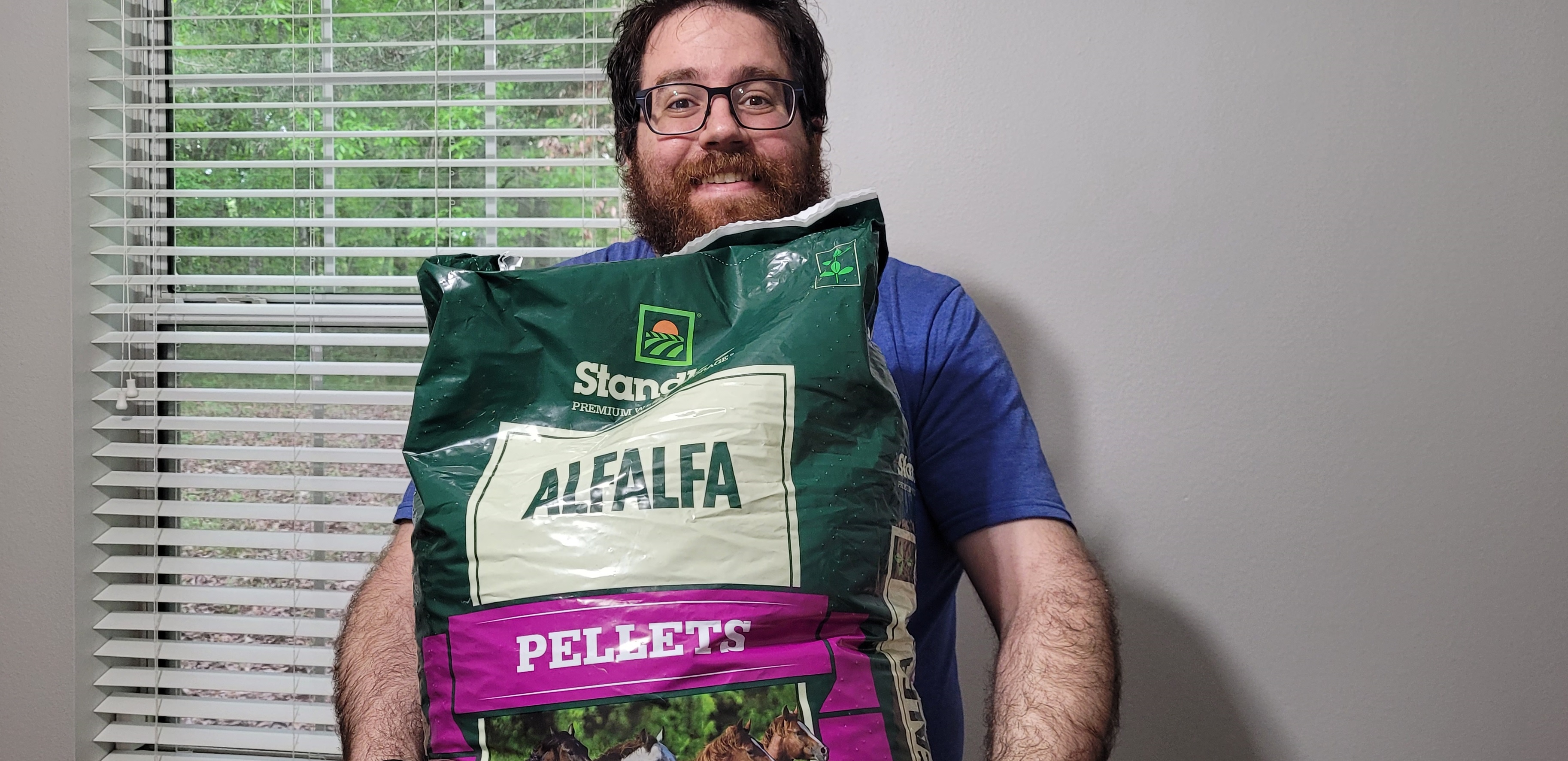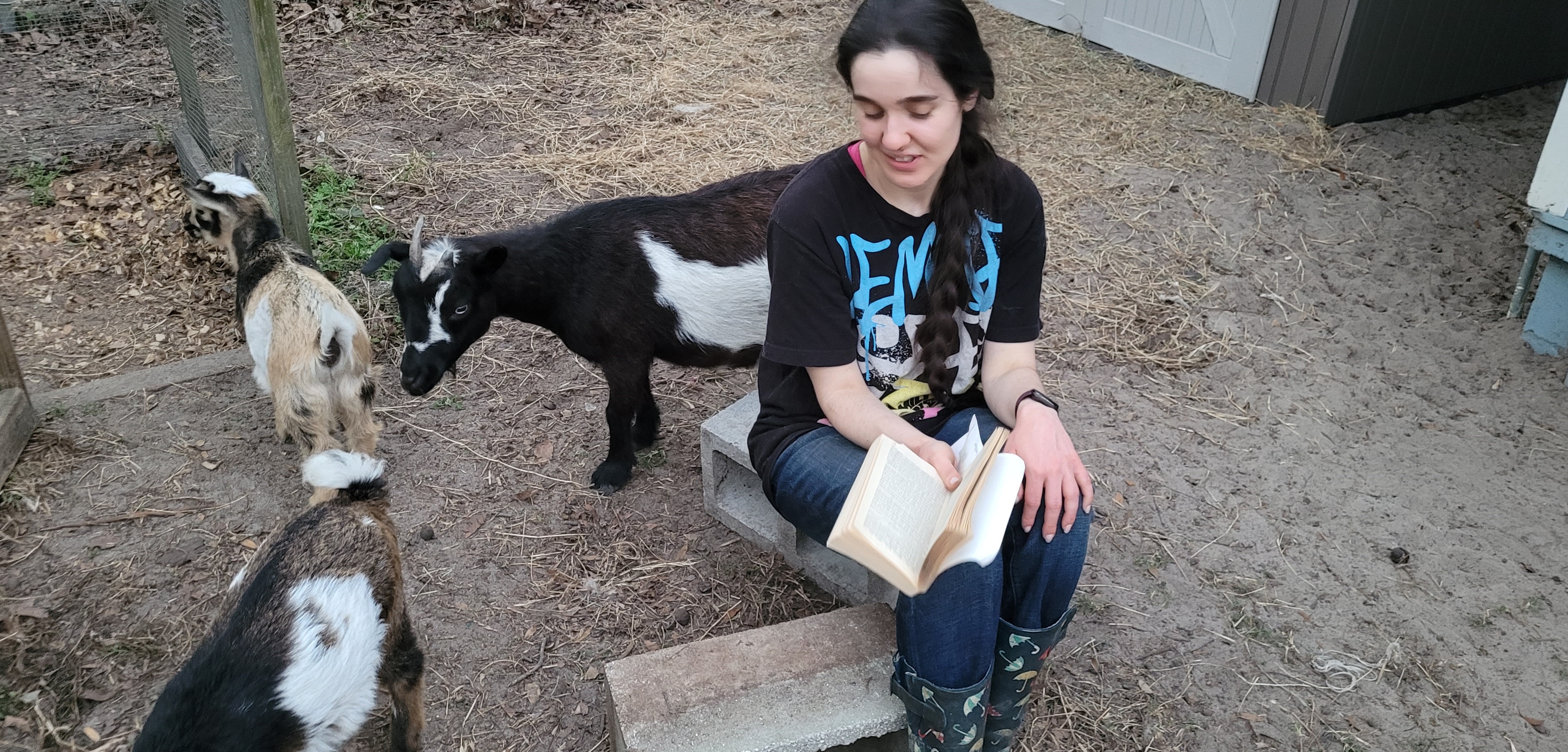Hello and welcome back to another beautiful Wednesday here at the Silly Couple’s Funny Farm. Today, we’re going to discuss a topic near and dear to us because it’s something that drove us insane early on. To clarify, we didn’t have any alfalfa pellets on hand when we got our stubborn Nigerian Dwarf goat, Delilah. And, if we had, maybe we wouldn’t have gone through such a stressful first week of milking. Let’s consider why everyone should have alfalfa pellets for goats.
The Struggle of Milking a Nigerian Dwarf
We can’t claim to be experts in the world of dairy. But, when it comes to milking Nigerian dwarf goats, were are getting more experienced every single day. In our research on what others recommend when milking dairy goats, we found there are a few different milking techniques out there as well. For Nigerian dwarfs in particular, it’s important to recognize just how small the animal’s teets are. The small size of the teets is one factor that makes milking Nigerian dwarfs a bit of a challenge, especially for first-time dairy goat owners. However, the real difficulty is in training the goat to use the milking stand.
When we brought Delilah home, we were warned that she did have a habit of dancing a little on the stand. And, we believe this was the case. But, when we took her to a new home, she decided it was time to test our mettle. She not only took the opportunity to dance, we also found she bent her knees and had a habit of kicking if her food got to low. Couple this with our slow start to milking, and we wouldn’t get much out of her before she’d start kicking.
We took a look at milking Nigerian dwarf goats previously and talked about how we went about improving this, so feel free to read that for more context. However, let’s dive right into the meat of this -why alfalfa pellets are the ultimate friend to dairy goat owners.
Using Alfalfa Pellets for Goats

If you have a Rural King nearby, we’d recommend adding alfalfa pellets to your shopping list before you have any goats in milk ready to go. If not, you can buy these alfalfa pellets on Amazon. Yes, we get a commission if you go that route, so we’d love it. But, we’d prefer to buy them cheaper at Rural King if you can -seriously, they are a lot less expensive if you can buy them in person there. Let’s focus in on why alfalfa pellets are so important, especially for dairy goats.
Any experienced goat owner can tell you that feeding a goat too much grain can be a bad idea. It can cause them to bloat, which is more serious than it sounds. It can also interfere with their natural digestive process, and the goat’s digestive system is quite interesting. But, if you can only feed so much grain to a goat when milking, what do you do when the goat finishes eating before you’ve finished milking? That’s where using alfalfa pellets for goats is so important.
Rather than let them run out of food, we mix in the morning grain ration with a couple cups of alfalfa pellets before milking. This way, our stubborn Delilah is able to happily eat while we get that precious milk from her teet (I appreciate my own rhymes at least).
Are Alfalfa Pellets Really Safe?

Of course, this leads to the natural question: is it safe for goats to eat that much Alfalfa. And, to be honest, the answers we’ve found on that subject are conflicting. Quick aside for a future post…academic research on this type of subject is unnecessarily hard to find and access. Despite this, we did a fair amount of digging and coupled with our huge intellects and small egos, we have concluded they are safe, at least within some limit.
In fact, there is precedence out there where many claim you can feed a goat 100% alfalfa pellets. If anyone has any solid research that this is accurate, please leave a link in the comments so we can check it out. Regardless, we don’t see the need for that extreme. Instead, we offer free access to both coastal and peanut hay throughout the day. We also give morning and evening grain rations based on the size of the goat. Since alfalfa pellets are just a pelletized version of grass that they could otherwise graze on to their heart’s content, it makes sense they can eat these pellets without too much concern.
Despite this, we err on the side of caution and plan to limit our feedings of these pellets to be mixed with grains and only offered at the time of their milking. So, while it seems safe for them to eat large amounts of alfalfa pellets, we recommend everyone just take the middle ground -grain and hay aren’t that much more expensive anyways.
Have a different perspective on the subject? Or, think we’re just downright idiots? Let us know in the comments below! Until next time, we’ll see you around the homestead.
